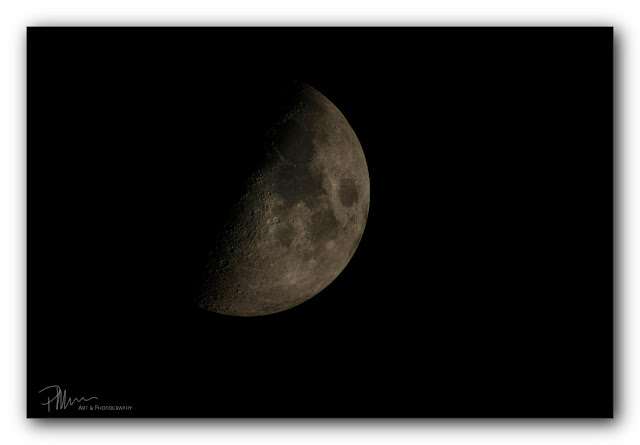Super-Resolution Imaging
My health is still quite lousy, overall, and has been this way since January. I believe that Sheila and I both contracted this pandemic virus and, lately, I've been bouncing back and forth between fever and fever-free. Sheila recovered relatively quickly but I'm struggling to recover. That isn't much of a surprise, however, considering my primary health issues.
Needless to say, I've had very little energy to accomplish anything of significance. Actually, I've been doing a lot of sleeping. On the rare occasion when I'm feeling well enough to think clearly, one of the things I have done is revisit some old lunar images I shot from our yard.
In this case, about two years ago, I shot a series of images with the intent of stacking the images to create a super-resolution final image. This is a post-processing technique similar to high-resolution pixel shift technology in some cameras that produces high resolution images. It works fairly well if done correctly.
So, a few nights ago, I was feeling well enough to see what I could accomplish with ten of these lunar images. I shot them through my Explore Scientific ED 102mm refractor telescope using my Sony a6000 camera. The camera is a 24 megapixel camera and by stacking these images using this super-resolution technique, I ended up with an image greater than 270 megapixels! That is a big image!
Here is the image in web-appropriate size...
By comparison, the average cell phone image is about 8 megapixels... my Sony cameras are at 24 megapixels... and the full size version of this lunar image is over 270 megapixels. That truly is a large image.
This is a cool technique and I'd like to experiment more on the moon as well as Jupiter, Saturn and Mars. We'll see how the next few months pan out.
Needless to say, I've had very little energy to accomplish anything of significance. Actually, I've been doing a lot of sleeping. On the rare occasion when I'm feeling well enough to think clearly, one of the things I have done is revisit some old lunar images I shot from our yard.
In this case, about two years ago, I shot a series of images with the intent of stacking the images to create a super-resolution final image. This is a post-processing technique similar to high-resolution pixel shift technology in some cameras that produces high resolution images. It works fairly well if done correctly.
So, a few nights ago, I was feeling well enough to see what I could accomplish with ten of these lunar images. I shot them through my Explore Scientific ED 102mm refractor telescope using my Sony a6000 camera. The camera is a 24 megapixel camera and by stacking these images using this super-resolution technique, I ended up with an image greater than 270 megapixels! That is a big image!
Here is the image in web-appropriate size...
By comparison, the average cell phone image is about 8 megapixels... my Sony cameras are at 24 megapixels... and the full size version of this lunar image is over 270 megapixels. That truly is a large image.
This is a cool technique and I'd like to experiment more on the moon as well as Jupiter, Saturn and Mars. We'll see how the next few months pan out.

Comments
Post a Comment